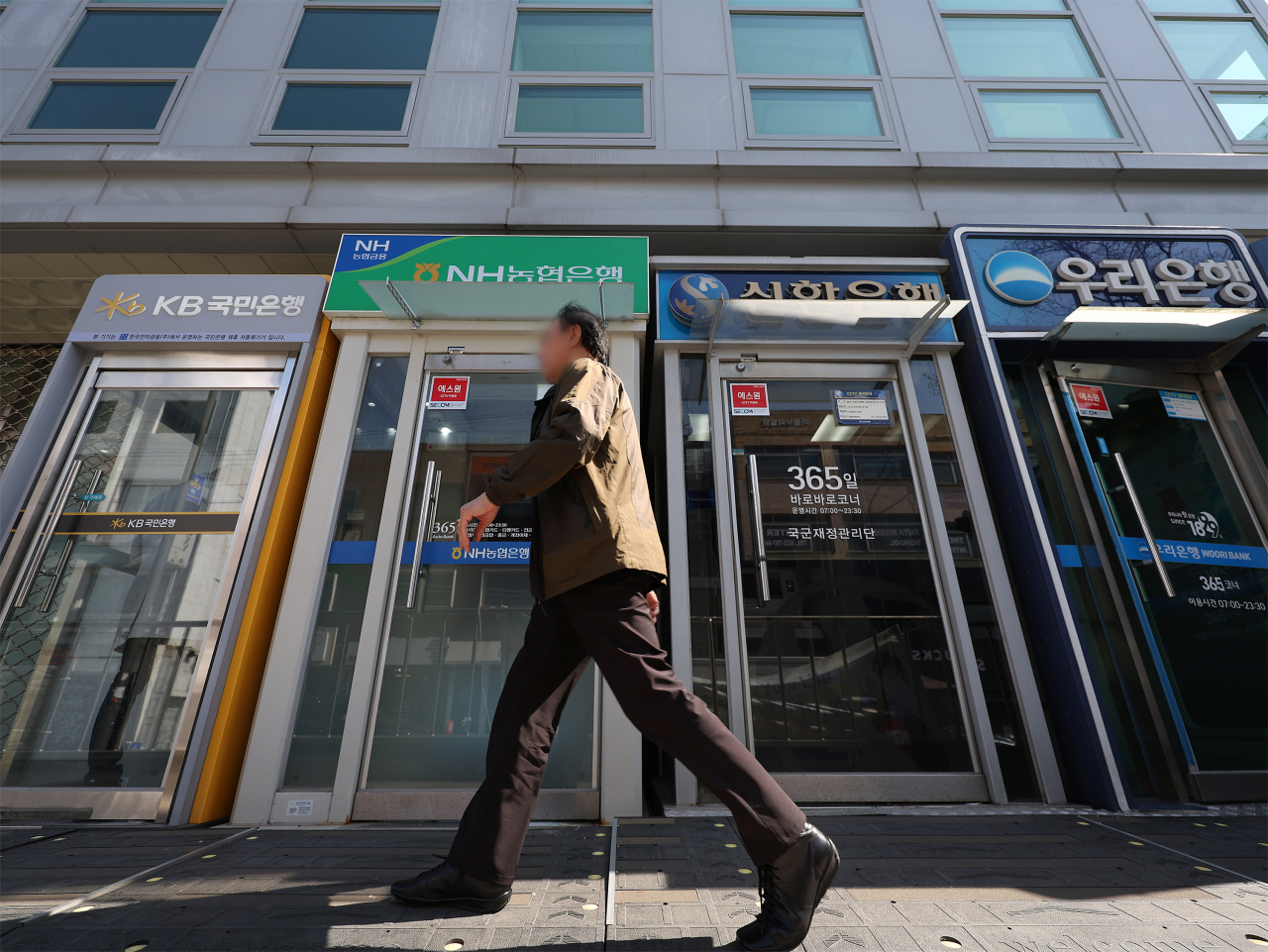 |
A man walks by ATMs of local banks installed on a street in Seoul on April 9. (Yonhap) |
Korean banking groups maintained solid capital adequacy despite significant payouts for consumer compensation due to misselling equity-linked securities tracking a Hong Kong index.
Industry sources reported that the average capital adequacy ratio, or Common Equity Tier 1, among five major Korean financial groups -- KB, Shinhan, Hana, Woori, and NongHyup -- was 12.8 percent in the first quarter of this year, a slight decline from 13 percent in the previous term and 12.9 percent from the same period last year.
CET1, based on the Bank for International Settlements' Basel III framework, is a key measure of a bank's financial stability as it indicates the proportion of a bank's capital relative to its risk-weighted assets. A higher CET1 ratio suggests greater resilience to financial downturns. In Korea, financial holding companies typically increase shareholder returns when this ratio exceeds 13 percent.
Initially, there were concerns that capital adequacy could deteriorate significantly due to sharp cuts in the firms' net profits from the voluntary compensation for losses caused by misselling ELS products. The five companies collectively set aside around 1.7 trillion won ($1.23 billion) for the ELS-related compensation, as reported in their regulatory filings.
Despite having the largest compensation reserve among the five, totaling 862 billion won, KB Financial Group maintained the highest CET1 ratio at 13.4 percent. This figure reflects a gradual decline from 13.7 percent a year ago, dropping to 13.6 percent at the end of last year, and then to 13.4 percent this quarter.
Shinhan Financial Group saw its CET1 ratio rise from 12.7 percent in the first quarter last year to 13.1 percent this year. Hana Financial Group also saw a modest increase to 12.9 percent in the same period. Shinhan and Hana reserved 274 billion won and 341.6 billion won, respectively, to cover ELS-related compensation.
In contrast, NongHyup Financial Group's CET1 ratio fell from 13.2 percent to 12.8 percent during the period, while Woori Financial Group's dropped from 12.1 percent to 12 percent.
Due to the ELS compensation, overall net profit among these five financial groups fell by 16.7 percent, dropping to 4.88 trillion won from a year earlier.
The better-than-expected CET1 ratios reflect the local government's initiative to improve the market valuation of underperforming Korean stocks, with financial holding firms among the initiative's primary beneficiaries.
"We intend to gradually increase the total shareholder return ratio as part of our value-up program by flexibly employing quarterly equalized dividends, share buybacks, and cancellations," noted a local banking official.







